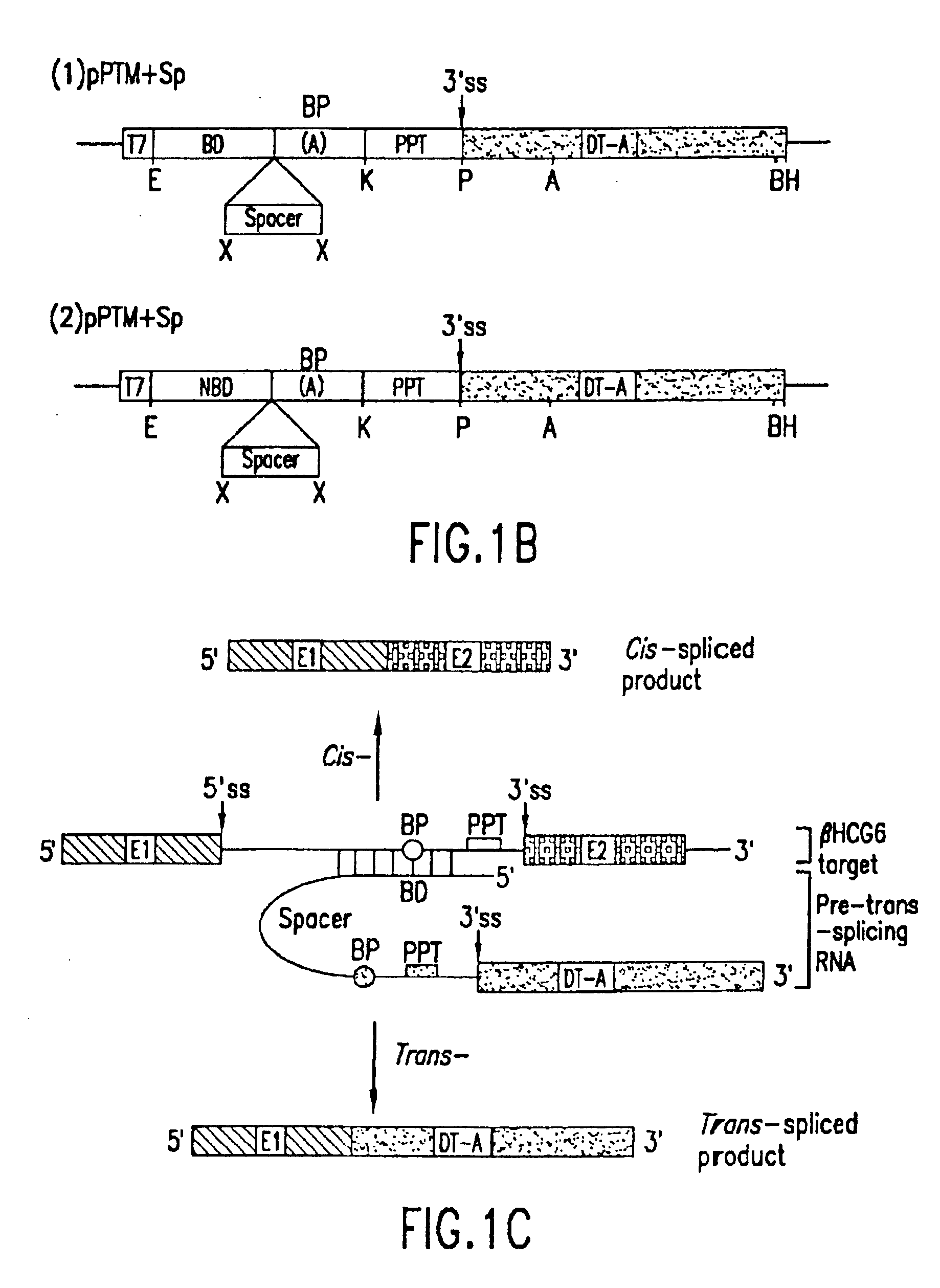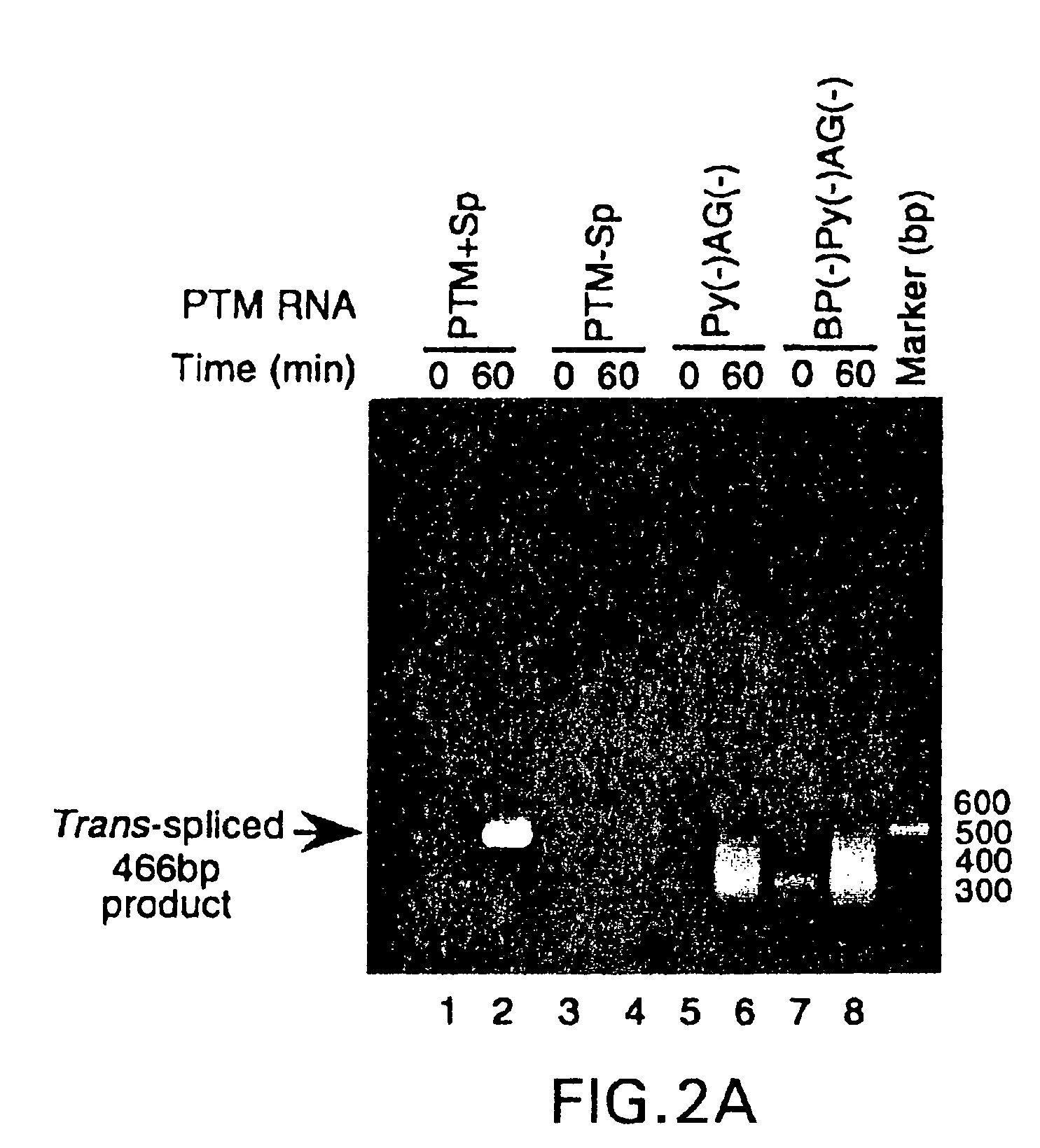Methods and compositions for use in spliceosome mediated RNA trans-splicing in plants
a technology of spliceosome and rna, which is applied in the direction of dna/rna fragmentation, peptides, enzymology, etc., can solve the problems of limited practical application of targeted trans-splicing to modify specific target genes, and the splicing of mammalian pre-mrnas is thought to be exceedingly rar
- Summary
- Abstract
- Description
- Claims
- Application Information
AI Technical Summary
Benefits of technology
Problems solved by technology
Method used
Image
Examples
Embodiment Construction
[0068] The present invention relates to compositions comprising pre-trans-splicing molecules (PTMs) and the use of such molecules for generating novel nucleic acid molecules. The PTMs of the invention comprise one or more target binding domains that are designed to specifically bind to pre-mRNA, a 3′ splice region that includes a branch point, pyrimidine tract and a 3′ splice acceptor site and / or a 5′ splice donor site; and one or more spacer regions that separate the RNA splice site from the target binding domain. In addition, the PTMs of the invention can be engineered to contain any nucleotide sequences such as those encoding a translatable protein product.
[0069] The methods of the invention encompass contacting the PTMs of the invention with a natural pre-mRNA under conditions in which a portion of the PTM is trans-spliced to a portion of the natural pre-mRNA to form a novel chimeric RNA. The target pre-mRNA is chosen as a target due to its expression within a specific cell typ...
PUM
| Property | Measurement | Unit |
|---|---|---|
| time | aaaaa | aaaaa |
| volume | aaaaa | aaaaa |
| volume | aaaaa | aaaaa |
Abstract
Description
Claims
Application Information
 Login to View More
Login to View More - R&D
- Intellectual Property
- Life Sciences
- Materials
- Tech Scout
- Unparalleled Data Quality
- Higher Quality Content
- 60% Fewer Hallucinations
Browse by: Latest US Patents, China's latest patents, Technical Efficacy Thesaurus, Application Domain, Technology Topic, Popular Technical Reports.
© 2025 PatSnap. All rights reserved.Legal|Privacy policy|Modern Slavery Act Transparency Statement|Sitemap|About US| Contact US: help@patsnap.com



